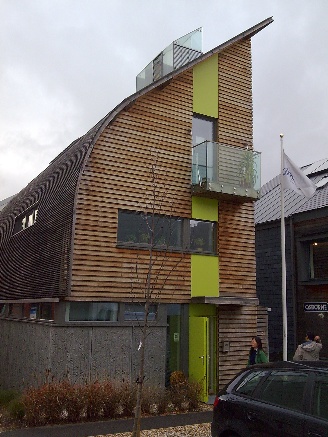
A demonstration house at BRE Global’s headquarters in Watford
BRE Global has extended the BREEAM (BRE Environmental Assessment Method) scheme to certify refurbishments and improvements to domestic buildings.
The BREEAM Domestic Refurbishment scheme will cover home improvement projects including replacing new windows and fitting new insulation, as well as larger developments ranging from multiple to single properties. The scheme will be open for project registration from 2 July 2012.
The process has been independently peer reviewed and trialled in a pilot scheme involving more than 200 properties. The scheme has also been developed in alignment with the Government’s Green Deal, which will be launched in autumn 2012 to provide grants for homeowners making energy efficient upgrades to their homes. However, because domestic lighting is not covered in the scope of the Green Deal, loans will not be available to meet the lighting benchmarks explained in the BREEAM guidelines.
"The new scheme helps building owners and occupiers to save operating costs and reduce the environmental impact of refurbishments. It pinpoints those elements of the refurbishment that will bring the greatest returns and provides a methodology, software tool and certification for those responsible for the delivery of sustainable domestic refurbishment projects," said Carol Atkinson, chief executive of BRE Global.
"As well as addressing overall sustainability issues, the scheme can help specific initiatives to tackle fuel poverty, reduce flooding and security risks, and enhance the health and wellbeing of tenants and householders. Certification under the scheme will provide market recognition for residential buildings that have had sustainable and higher quality refurbishments."
As with other versions of the accreditation scheme, credits are awarded in nine categories according to the building's environmental performance, including energy, water, waste, health and wellbeing, materials, management, pollution and innovation. The credits are then added together to produce a single overall score on a scale of Pass, Good, Very Good, Excellent and Outstanding, which is also represented by a star rating from one to five stars.
Under the energy category, two credits are available for external and internal lighting of the building. For one credit, the building's external lighting must demonstrate compliance with energy efficient space lighting, including lighting in communal areas, which has been used exclusively or in conjunction with energy efficient security lighting.
Another credit is also allocated for internal lighting where the energy required is minimised through the provision of maximum average wattage across the total floor area in the property of 9 watts/m2.





